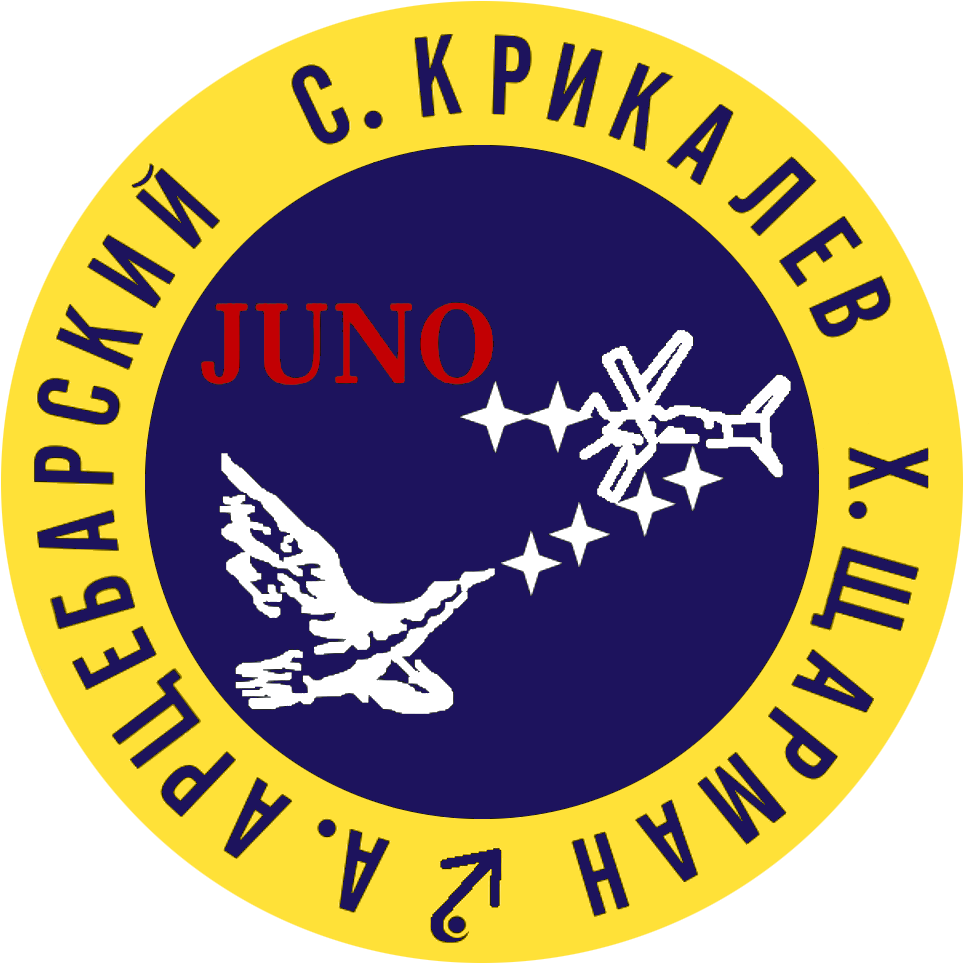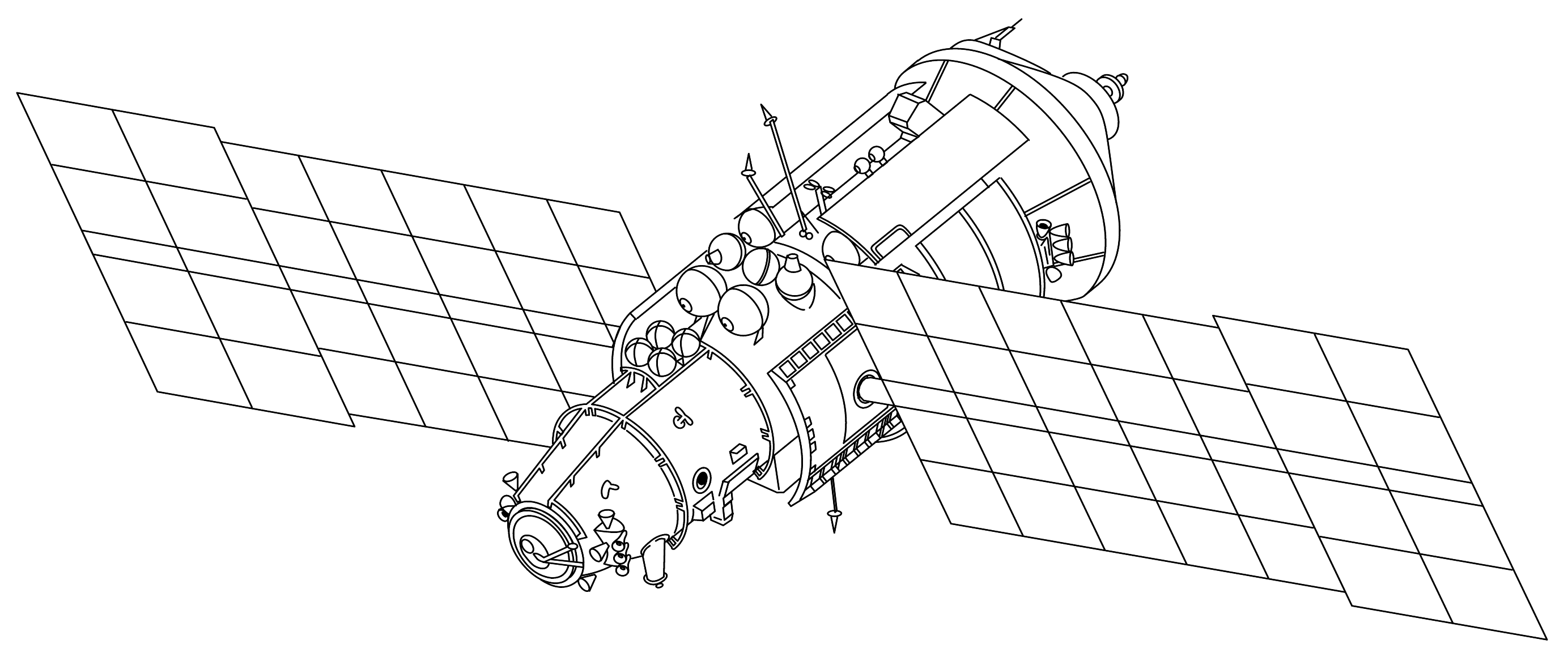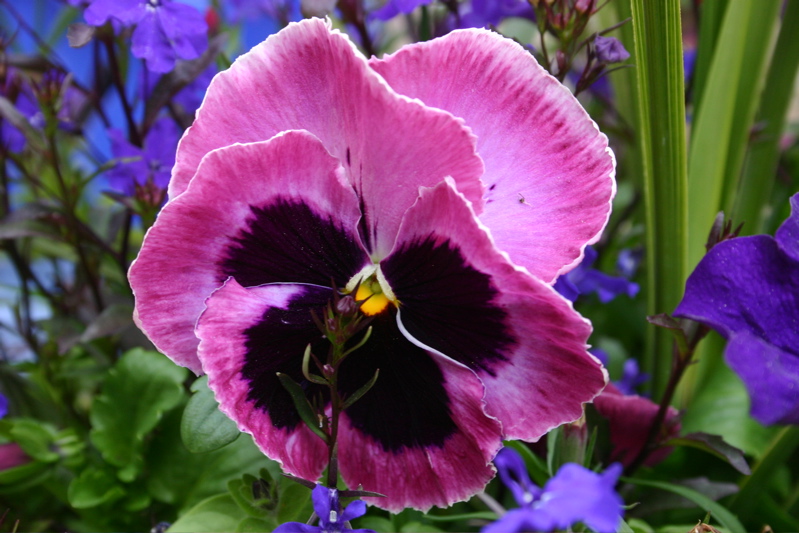|
Soyuz TM-12
Soyuz TM-12 was the 12th expedition to Mir, and included the first Briton in space,The mission report is available here: http://www.spacefacts.de/mission/english/soyuz-tm12.htm Helen Sharman. Crew Mission highlights The Mir crew welcomed aboard Anatoli Artsebarski, Sergei Krikalev (on his second visit to the station), and British cosmonaut-researcher Helen Sharman, who was aboard as part of Project Juno, a cooperative venture partly sponsored by British private enterprise. Sharman's experimental program, which was designed by the Soviets, leaned heavily toward life sciences, her speciality being chemistry. A bag of 250,000 pansy seeds was placed in the Kvant-2 EVA airlock, a compartment not as protected from cosmic radiation as other Mir compartments. Sharman also contacted nine British schools by radio and conducted high-temperature superconductor experiments with the Elektropograph-7K device. Sharman commented that she had difficulty finding equipment on Mir as there was a ... [...More Info...] [...Related Items...] OR: [Wikipedia] [Google] [Baidu] |
Project Juno
Project Juno was a privately funded campaign which selected Helen Sharman to be the first Briton in space. As the United Kingdom did not, at that time, have a human spaceflight programme (until the UK joined the human spaceflight elements of ESA's exploration programme in December 2012, which led to Tim Peake's ESA mission in 2015), a private consortium was formed to raise money to pay the Soviet Union for a seat on a Soyuz mission to the Mir space station. The Soviet Union had recently flown Toyohiro Akiyama, a Japanese journalist, under a similar arrangement. Selection A call for applicants was publicized in the UK (one ad read "Astronaut wanted. No experience necessary"), leading to 13,000 applications. Juno selected four candidates to train in the Soviet Union: * Gordon Brooks (Royal Navy physician, then 33) * Major Timothy Mace (Army Air Corps, 33) * Clive Smith (Kingston University lecturer, 27) * Helen Sharman (food technologist, 26) Eventually Mace and Sharman were s ... [...More Info...] [...Related Items...] OR: [Wikipedia] [Google] [Baidu] |
Soyuz-TM
The Soyuz-TM were fourth generation (1986–2002) Soyuz spacecraft used for ferry flights to the Mir and International Space Station, ISS space stations. The Soyuz spacecraft consisted of three parts, the Orbital Module, the Descent Module and the Service Module. The first launch of the spacecraft was the uncrewed Soyuz TM-1 on May 21, 1986, where it docked with the Mir space station. The final flight was Soyuz TM-34, which docked with the International Space Station and landed November 10, 2002. Background After the Apollo–Soyuz, Apollo-Soyuz Test project in 1976, the Soyuz for crewed flights had the singular mission of supporting crewed space stations. The original Soyuz had a limited endurance when docked with a station, only about 60 to 90 days. There were two avenues for extending the duration of missions past this. The first avenue was to make upgrades to increase the Soyuz spacecraft's endurance. The Soyuz-T could last 120 days and the Soyuz-TM could last 180 days ... [...More Info...] [...Related Items...] OR: [Wikipedia] [Google] [Baidu] |
Soyuz Programme
The Soyuz programme ( , ; russian: link=no, Союз , meaning "Union") is a human spaceflight programme initiated by the Soviet Union in the early 1960s. The Soyuz spacecraft was originally part of a Moon landing project intended to put a Soviet cosmonaut on the Moon. It was the third Soviet human spaceflight programme after the Vostok (1961–1963) and Voskhod (1964–1965) programmes. The programme consists of the Soyuz capsule and the Soyuz rocket and is now the responsibility of the Russian Roscosmos. After the retirement of the Space Shuttle in 2011, Soyuz was the only way for humans to get to the International Space Station (ISS) until 30 May 2020, when Crew Dragon flew to the ISS for the first time with astronauts. Soyuz rocket The launch vehicles used in the Soyuz expendable launch system are manufactured at the Progress State Research and Production Rocket Space Center (TsSKB-Progress) in Samara, Russia. As well as being used in the Soyuz programme as the laun ... [...More Info...] [...Related Items...] OR: [Wikipedia] [Google] [Baidu] |
Soviet Union–United Kingdom Relations
The Soviet Union,. officially the Union of Soviet Socialist Republics. (USSR),. was a transcontinental country that spanned much of Eurasia from 1922 to 1991. A flagship communist state, it was nominally a federal union of fifteen national republics; in practice, both its government and its economy were highly centralized until its final years. It was a one-party state governed by the Communist Party of the Soviet Union, with the city of Moscow serving as its capital as well as that of its largest and most populous republic: the Russian SFSR. Other major cities included Leningrad (Russian SFSR), Kiev (Ukrainian SSR), Minsk (Byelorussian SSR), Tashkent (Uzbek SSR), Alma-Ata (Kazakh SSR), and Novosibirsk (Russian SFSR). It was the largest country in the world, covering over and spanning eleven time zones. The country's roots lay in the October Revolution of 1917, when the Bolsheviks, under the leadership of Vladimir Lenin, overthrew the Russian Provisional Government that ... [...More Info...] [...Related Items...] OR: [Wikipedia] [Google] [Baidu] |
1991 In The Soviet Union
File:1991 Events Collage.png, From left, clockwise: Boris Yeltsin, 1991 Russian presidential election, elected as Russia's first President of Russia, president, waves the new flag of Russia after the 1991 Soviet coup d'état attempt, orchestrated by Soviet Union, Soviet hardliners; Mount Pinatubo 1991 eruption of Mount Pinatubo, erupts in the Philippines, making it the List of large historical volcanic eruptions, second-largest Types of volcanic eruptions, volcanic eruption of the 20th century; MTS Oceanos sinks off the coast of South Africa, but the crew notoriously abandons the vessel before the passengers are rescued; Dissolution of the Soviet Union: The Flag of the Soviet Union, Soviet flag is lowered from the Kremlin for the last time and replaced with the flag of the Russian Federation; The United States and soon-to-be dissolved Soviet Union sign the START I Treaty; A tropical cyclone 1991 Bangladesh cyclone, strikes Bangladesh, killing nearly 140,000 people; Lauda Air Flight ... [...More Info...] [...Related Items...] OR: [Wikipedia] [Google] [Baidu] |
Out Of The Present
''Out of the Present'' is a 1995 documentary film by Andrei Ujică that deals with the prolonged stay of the Russian cosmonaut Sergei Krikalev at space station Mir. This was the first time a 35 mm film camera was used in space. Synopsis The film begins with the May 1991 docking of Soyuz TM-12 at the station. For 92 minutes (the time for one Earth-orbit of the station) the routine of a long-term space station crew is shown, frequently interrupted by panoramic Earth views in addition to observing the day-to-day activities of eating, exercising and conducting experiments in weightlessness. Krikalev was a bystander to the 1991 Soviet coup d'état attempt and the collapse of the Soviet Union during his 10-month stay. The arrival of Soyuz TM-13 is a highlight, while the station was crowded with five cosmonauts for a week. Due to the then-current political situation in Kazakhstan, a Kazakh cosmonaut, Toktar Aubakirov Toktar Ongarbayuly Aubakirov ( kk, Тоқтар Оңғарба ... [...More Info...] [...Related Items...] OR: [Wikipedia] [Google] [Baidu] |
Dissolution Of The Soviet Union
The dissolution of the Soviet Union, also negatively connoted as rus, Разва́л Сове́тского Сою́за, r=Razvál Sovétskogo Soyúza, ''Ruining of the Soviet Union''. was the process of internal disintegration within the Soviet Union (USSR) which resulted in the end of the country's and its federal government's existence as a sovereign state, thereby resulting in its constituent republics gaining full sovereignty on 26 December 1991. It brought an end to General Secretary Mikhail Gorbachev's (later also President) effort to reform the Soviet political and economic system in an attempt to stop a period of political stalemate and economic backslide. The Soviet Union had experienced internal stagnation and ethnic separatism. Although highly centralized until its final years, the country was made up of fifteen top-level republics that served as homelands for different ethnicities. By late 1991, amid a catastrophic political crisis, with several republics alre ... [...More Info...] [...Related Items...] OR: [Wikipedia] [Google] [Baidu] |
Mikhail Gorbachev
Mikhail Sergeyevich Gorbachev (2 March 1931 – 30 August 2022) was a Soviet politician who served as the 8th and final leader of the Soviet Union from 1985 to dissolution of the Soviet Union, the country's dissolution in 1991. He served as General Secretary of the Communist Party of the Soviet Union from 1985 and additionally as head of state beginning in 1988, as Chairman of the Presidium of the Supreme Soviet from 1988 to 1989, Chairman of the Supreme Soviet from 1989 to 1990 and the only President of the Soviet Union from 1990 to 1991. Ideologically, Gorbachev initially adhered to Marxism–Leninism but moved towards social democracy by the early 1990s. Gorbachev was born in Privolnoye, Stavropol Krai, Privolnoye, Russian Soviet Federative Socialist Republic, Russian SFSR, to a poor peasant family of Russian and Ukrainian heritage. Growing up under the rule of Joseph Stalin, in his youth he operated combine harvesters on a Collective farming, collective farm before join ... [...More Info...] [...Related Items...] OR: [Wikipedia] [Google] [Baidu] |
Zvezdny Gorodok
Star City (russian: Звёздный городо́к, ''Zvyozdny gorodok''The name "Zvyozdny gorodok" literally means "starry townlet".) is a common name of an area in Zvyozdny gorodok, Moscow Oblast, Russia, which has since the 1960s been home to the Yuri Gagarin Cosmonaut Training Center (GCTC). Officially, the area was known as " closed military townlet No. 1" and at various times had also been designated as Shchyolkovo-14 () and Zvyozdny (). Overview Cosmonauts of the Russian Federal Space Agency, and the Soviet space program before it, have lived and trained in Star City since the 1960s. In the Soviet era the location was a highly secret and guarded military installation, access to which was severely restricted. Many Russian cosmonauts, past and present, and Training Centre's personnel, live in Star City with their families. The facility has its own post office, high school, shops, child day care/kindergarten, movie theater, sports and recreation facilities, rai ... [...More Info...] [...Related Items...] OR: [Wikipedia] [Google] [Baidu] |
Kvant-2
Kvant-2 (russian: Квант-2; English: Quantum-II/2) (77KSD, TsM-D, 11F77D) was the third module and second major addition to the Mir space station. Its primary purpose was to deliver new science experiments, better life support systems, and an airlock to Mir. It was launched on November 26, 1989 on a Proton rocket. It docked to Mir on December 6. Its control system was designed by the NPO "Electropribor" (Kharkiv, Ukraine). Description Kvant-2 was the first Mir module based on the TKS spacecraft (77k module). Kvant-2 was divided into three compartments. They were the EVA airlock, the instrument/cargo compartment, and the instrument/experiment compartment. The instrument/cargo compartment could be sealed off and act as an extension or a back-up to the airlock. Before Kvant-2 docked to the station, EVAs had to be carried by depressurizing the docking node on the Core Module. Kvant-2 also carried the Soviet version of the Manned Maneuvering Unit for the Orlan space suit. It de ... [...More Info...] [...Related Items...] OR: [Wikipedia] [Google] [Baidu] |
Pansy
The garden pansy (''Viola'' × ''wittrockiana'') is a type of large-flowered hybrid plant cultivated as a garden flower. It is derived by hybridization from several species in the section ''Melanium'' ("the pansies") of the genus ''Viola'', particularly ''Viola tricolor'', a wildflower of Europe and western Asia known as heartsease. It is sometimes known as ''Viola tricolor'' var. ''hortensis'', but this scientific name is ambiguous. While ''Viola tricolor'' var. ''hortensis'' Groenland & Rümpler is a synonym of ''Viola'' × ''wittrockiana'', ''Viola tricolor'' var. ''hortensis'' DC. refers to a horticultural variety of wild pansy (''Viola tricolor'' without interspecific hybridization) that had been illustrated in ''Flora Danica'' in 1777 before the existence of ''Viola'' × ''wittrockiana''. The chromosome number of ''Viola'' × ''wittrockiana'' is 2n = 44–52, with most cultivars being 2n = 48. The flower is in diameter and has two slightly overlapping upper petals, tw ... [...More Info...] [...Related Items...] OR: [Wikipedia] [Google] [Baidu] |

.jpg)


.jpg)



